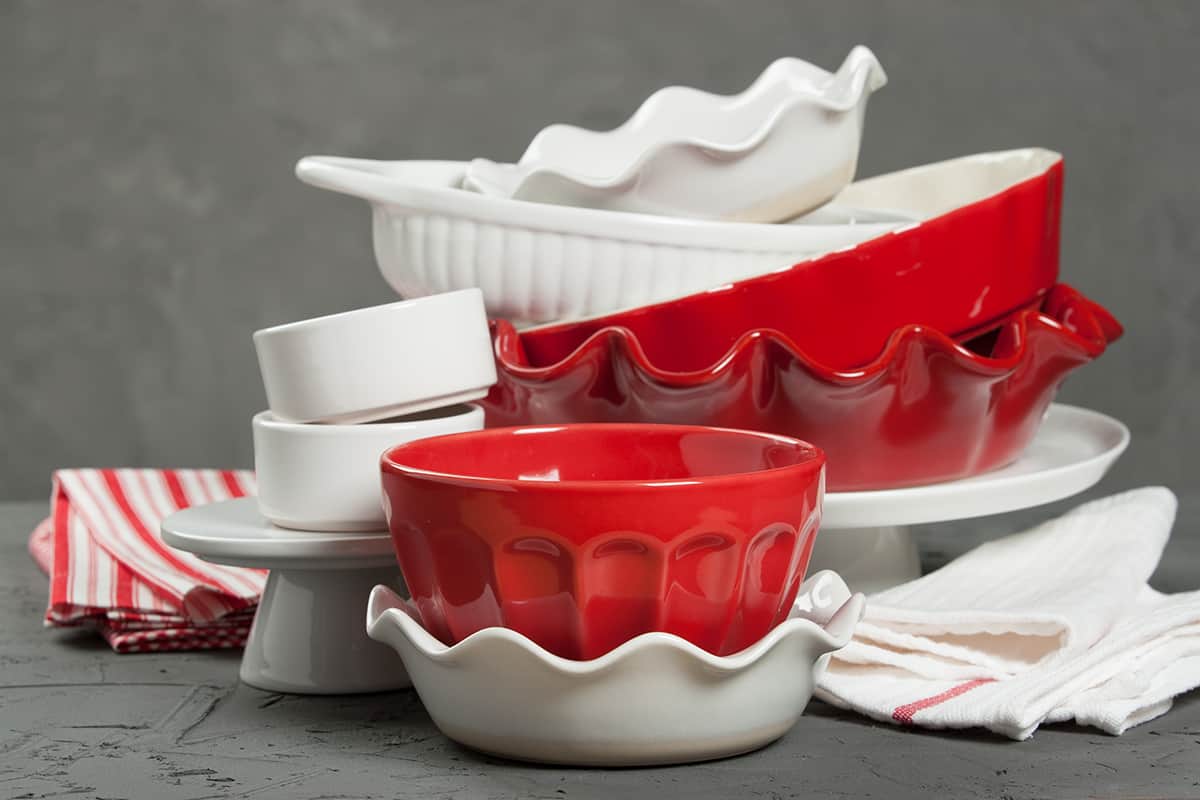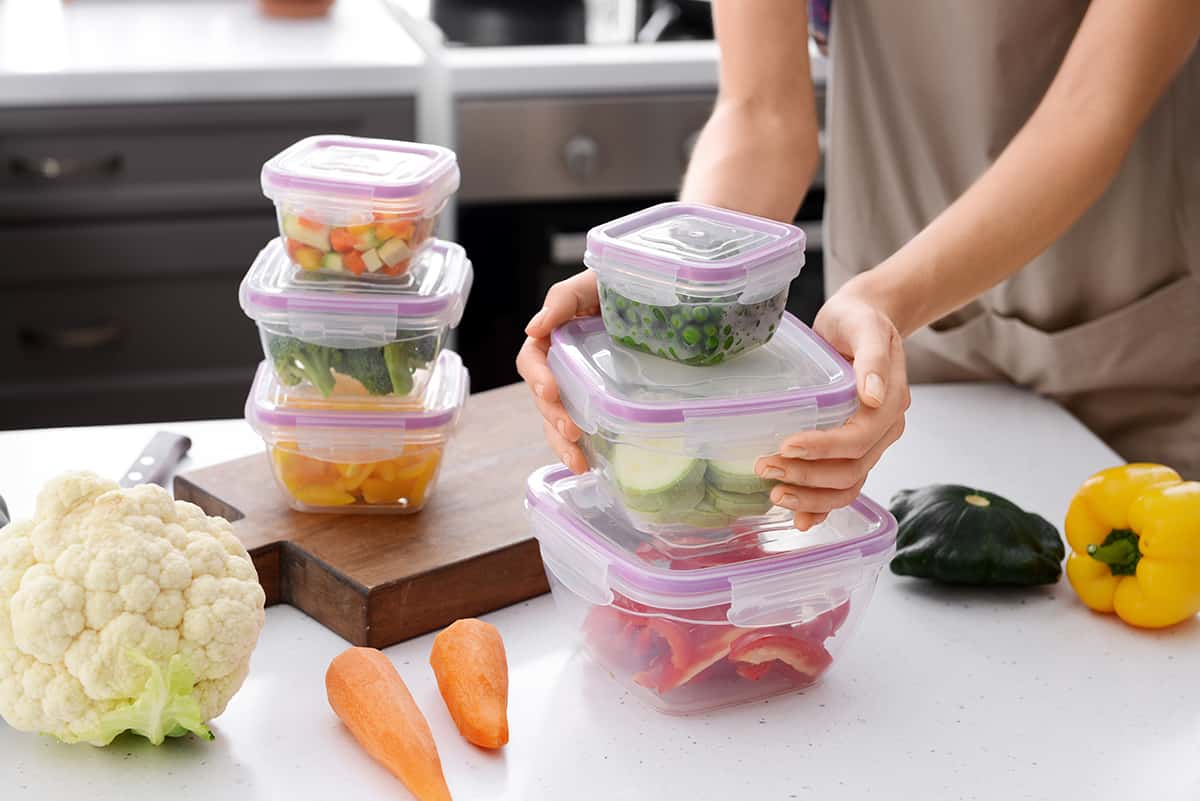Bakeware can be made of all sorts of materials, from glass to ceramic. However, bakeware is very rarely made of plastic, if at all. So, is it safe to place plastic containers in an oven?
You should avoid placing plastic in an oven at all times. Traditional plastic containers have a temperature tolerance of up to 212°F, while oven-safe containers will typically have a temperature tolerance of at least 400°F.
However, there is a specific type of plastic that can be considered oven-safe. In this guide, I’ll describe what that is, as well as other materials that are safe for the oven.
Can Plastic Go in the Oven?
By definition, bakeware should be able to withstand immense heat, including disposable bakeware. It should maintain its shape while exposed to more than 300°F without releasing toxic fumes and warping in shape. Plastic, however, does not fulfill these two criteria.
Plastic, as well as most resins, are not designed to be reheated in an oven. I probably don’t have to tell you that plastic melts in extreme temperatures, and nobody wants to fish out plastic remnants from their dinner.
What about reheating food in a plastic container in the oven? This, too, can be too risky since the plastic may not withstand temperatures over 150°F. To be on the safe side, you should avoid using plastic in the oven. In fact, even turning on the light in your oven can be too hot for plastic containers to bear.
With that said, there’s a specific type of plastic that is oven-safe, which is known as CPET.
What Is CPET?
Crystallized Polyethylene Terephthalate (CPET) is a unique type of plastic that can stand up to extreme temperature and temperature changes. It retains its shape in temperatures between 32 and 400°F, making it technically oven-safe. CPET is used for all sorts of kitchen supplies, from trays to containers.
While CPET is oven-safe, you should make sure that the oven’s temperature never goes beyond 400°F. This isn’t so much of an issue if you’re reheating leftovers or warming side dishes for an upcoming dinner party. However, if you want to make roasted potatoes or lasagna at over 400°F, you should look for alternative bakeware materials, of which there are plenty.
How to Tell Whether a Material Is Oven-Safe

The simplest way to determine whether something is oven-safe is it will come with an oven-safe label. Bakeware made of aluminum, stainless steel, cast iron, ceramic, and stone are all safe to bake food with in an oven. However, each bakeware material has a specific set of advantages and disadvantages regarding heat conduction, heat retention, and durability.
Another way to tell whether something is oven-safe is by figuring out what it’s used for. Cookie sheets, muffin tins, pizza stones, cake sheets, Bundt pans, casserole dishes—these are all used to hold baked foods, and as such, they can go inside an oven without issue.
What Materials Are Not Oven-Safe?
There is an infinitely long list of items that don’t belong in an oven, but I’ll talk about some of the most common materials used in the kitchen:
Wax paper
Wax paper is not parchment paper and vice versa. While both can be used to wrap meats prior to freezing, only parchment paper can withstand the high temperatures inside an oven. Wax paper is made of wax and will melt in an oven, similar to most plastics.
Paper-based containers
This includes paper plates, paper bags, and paper food wrap. Basically, any product sporting the “paper” name, except for parchment paper, doesn’t belong in an oven. Another exception to this rule is paperboard containers, which have a temperature tolerance of up to 400°F. So, like CPET, you shouldn’t use it for roasting or broiling.
Non-tempered Glass
Casserole dishes are usually made of tempered glass to stand up to the immense heat while baking. Non-tempered glass, on the other hand, hasn’t been treated to withstand extreme temperatures or even bumps. Removing non-tempered glass from a super-hot oven may cause it to explode due to the sudden change in temperature. Leave non-tempered glass products for drinkware and household ornaments.
How to Remove Plastic Residue from an Oven
If you’re reading this guide because you made the mistake of placing plastic inside your oven, don’t worry. You’re most certainly not the first person to do so, nor are you the last.
Removing Plastic from Oven Floor and Racks
Here’s what you can do to get rid of melted plastic from your oven:
- Shut off your oven and allow it to come down to room temperature.
- Fill a resealable bag with ice.
- Place the ice bag over the melted plastic and shut the oven door.
- Let the ice bag sit for 30 minutes or until the ice has melted completely. At this time, the plastic should be hard and brittle.
- Use a scraping tool to scrape the brittle plastic fragments off the floor of your oven.
- Turn your oven on to 200°F and make sure all of the plastic residue is gone.
If you see bubbling spots on the walls, racks, or trays in your oven, repeat this procedure until all of the melted plastic is gone.
If you have a self-cleaning oven, removing melted plastic is a million times easier. Just turn the self-clean cycle on, and the oven will disintegrate the plastic, along with old food remnants. Simply let the oven come back down to room temperature and wipe away all of the ashy debris.
Removing plastic from Oven Door
Now, here’s what you should do to get rid of melted plastic from the oven door.
- Shut off the oven and let it come down to room temperature.
- Mix a 2:1 paste of baking soda and water.
- Rub the paste on the bits of plastic clinging to the oven door.
- Let the paste cure for 15 minutes before using the rough side of a sponge to wipe it away. For large splotches of melted plastic, use a razor blade to chip the plastic away. Make sure to hold the blade at a 30° angle to prevent scratching the glass panel.
Removing Plastic from Heating Element
Getting rid of melted plastic from an electric oven’s heating element is a lot simpler. Here’s what you have to do:
- Preheat the oven to 200°F.
- Shut the oven off and allow it to come down slightly (around 120°F).
- Use a wooden spoon to scrape off the plastic residue from the heating coils.
- Turn the oven back on to 200°F to disintegrate the final remnants of plastic.
It’s important that you exercise extreme caution when cleaning the oven’s heating element. If you don’t let the heating coils come down to around 120°F before going at it with a wooden spoon, it may become singed.
Is Silicone Oven-Safe?
![]()
You’ve probably seen an upsurge in silicone bakeware and kitchen supplies, and there’s a very good reason for this—silicone is extremely easy to wash. Food debris has a hard time clinging onto silicone, though it can become stained when you leave tomato sauce in a silicone container for longer than 24 hours.
In addition to being easy to clean, silicone is also oven-safe. It has a temperature tolerance of up to 450°F, so there’s no question whether or not you can use it as a mat to roast potatoes.
Now, is silicone a type of plastic? It depends on who you ask. Silicone technically falls into the rubber category, but the plastic industry has claimed this material as its own.






